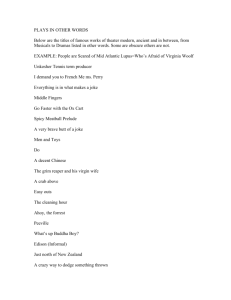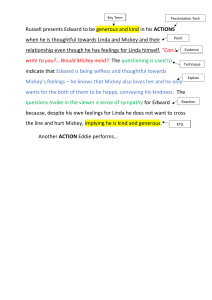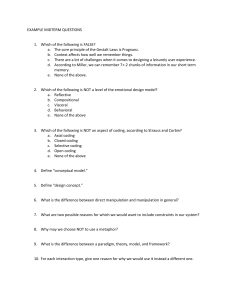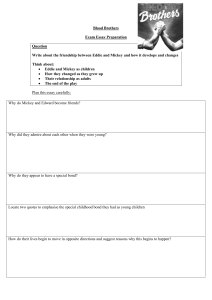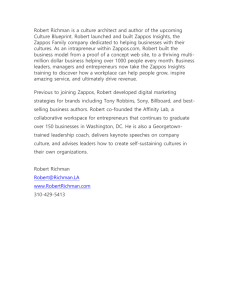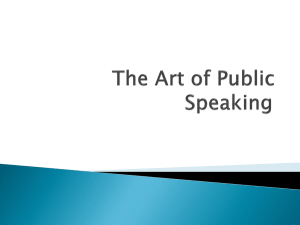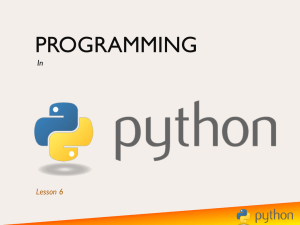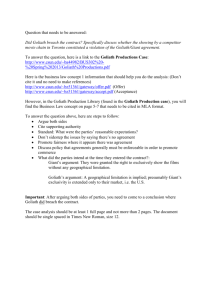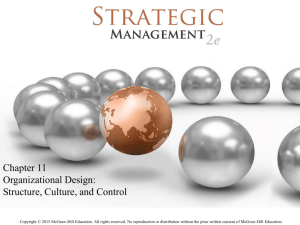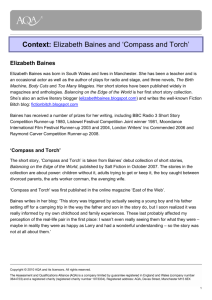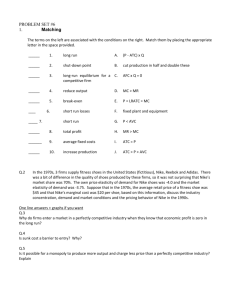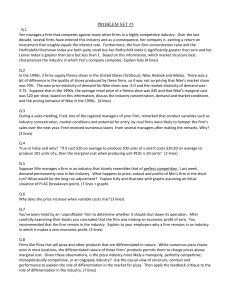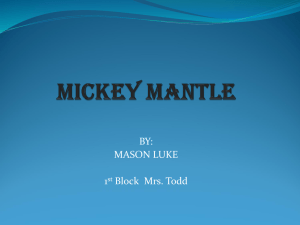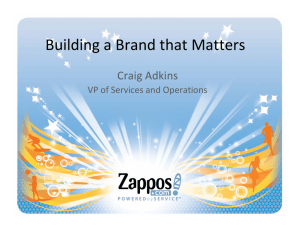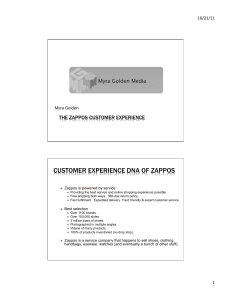The Student as Customer
advertisement
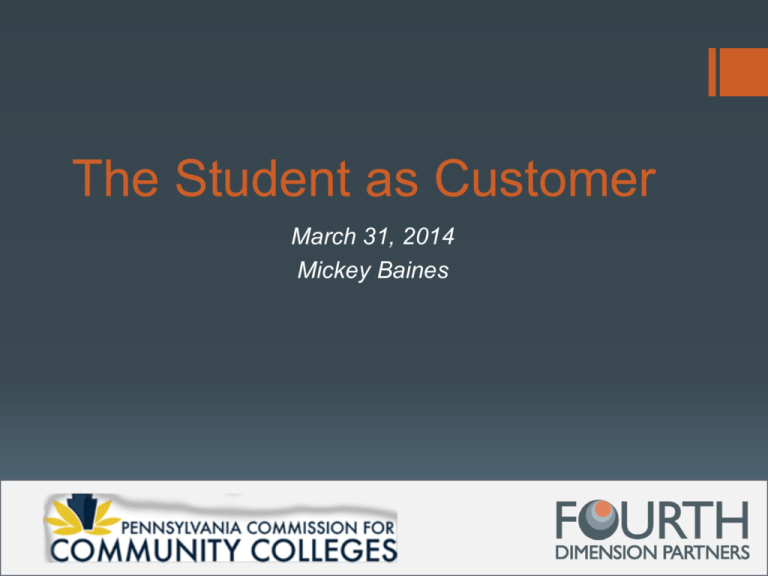
The Student as Customer March 31, 2014 Mickey Baines Welcome & Introductions Introductions & Goals for this session Define service in higher education Higher Education from your students’ perspective Share a model to institutionally improve service Offer ideas for resolving service issues and providing support to staff “on the front lines” Introductory Exercise Partner-up with someone next to you Have each member take a turn to share based on instructions given Take 3-4 minutes What is exceptional service? vs. Dos Equis vs. Coronas and CJ Skender 4 Student & Customer Relationship Primary & Supporting Customers 1 Who are they? David and Goliath 2: How do you engage your students? Is your approach diversified, and has it been updated within the past 5 years? Serving your “Primary Customer” in Higher Ed Differentiating “Customer Service”: Wal-Mart, Zappos & the Community College Watch short video 3 Addressing Service Institutionally It’s about perspective What is your mission? What is their mission? Develop a Foundation Establish baseline Instill at all levels Differentiate support by level Critical Service Opportunities The Run-Around Resolve the student’s problem Find the root cause Bring all involved parties together to understand process and perspective Diffusing Tense Situations Three Steps “Your actions speak so loudly, I can’t hear your words.” John Maxwell. “Seek first to understand, then to be understood,” Stephen Covey. “When we move out of ourselves and into the other person’s experience, seeing the world with that person, as if we were that person, we are practicing empathy. ” Arthur Ciaramicoli & Katherine Ketcham Leading Those on the Front Lines Researchers conduct an experiment on college students 6: Chocolate Cookies and Radishes Self-control and Will-power The Elephant & the Rider Understanding the significance of change Hiring the right staff An Aside A Case Study: A Comedian’s Perspective What goes into writing a joke? Watch short video 7 How much time does he give to each joke? And how does that impact his audience members’ experience? Do we give equally to each 1-3 minute experience of our students? Closing Questions Contact information: Mickey Baines mickey@fourthdimensionpartners.com 484.525.0550 Works Cited 1. Drucker, Kotler, et al. The Five Most Important Questions You Will Ever Ask About Your Organization, 2008. 2. Gladwell, Malcolm. David and Goliath, 2013. 3. Grant, Adam. Give and Take, 2013. 4. “Inside Zappos,” CBS Sunday Morning, Erin Moriarty, CBS. 5. Burg, Bob. Adversaries into Allies, 2013. 6. Heath, Chip & Dan, Switch, 2010. 7. “Jerry Seinfeld – How to Write a Joke,” New York Times, 2012.
